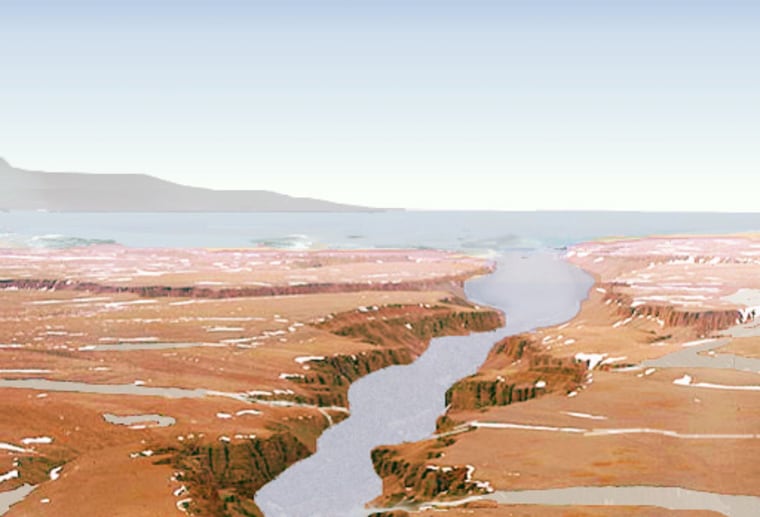Rather than having had its air knocked out into space, Mars might just be holding its breath.
New findings suggests the missing atmosphere of Mars might be locked up in hidden reservoirs on the planet, rather than having been chafed away by billions of years' worth of solar winds as previously thought.
Combining two years of observations by the European Space Agency’s Mars Express spacecraft, researchers determined that Mars is currently losing only about 20 grams of air per second into space.
Extrapolating this measurement back over 3.5 billion years, they estimate that only a small fraction, 0.2 to 4 millibars, of carbon dioxide and a few centimeters of water could have been lost to solar winds during that timeframe. (A bar is a unit for measuring pressure; Earth’s atmospheric pressure is about 1 bar.)
Missing greenhouse
According to the "warm and wet early Mars" model, liquid water once flowed on the Red Planet’s surface. Evidence from channels and gullies recently spotted on Mars suggest the water layer might have been more than half a mile deep in places. For Mars to keep that much water in liquid form, the planet must have had a much higher atmospheric temperature, which scientists think was made possible by a strong greenhouse effect in the planet’s past.
Mars' atmosphere must have been between 1 to 5 bars to maintain that kind of greenhouse effect, scientists think. But Mars’ atmospheric pressure today is only a small fraction of that—about 0.008 bars, or about 0.7 percent of the average surface pressure at sea level on Earth.
What happened to Mars' atmosphere — and by association, its water — is one of the central mysteries surrounding the Red Planet today. One idea was that the atmosphere was eroded over the course of several billion years by the sun’s solar winds.
The new findings, detailed in Friday’s issue of the journal Science, suggest this might not be the case.
Hidden reservoir?
Where the atmosphere went is still unclear, but the authors speculate that it might still be contained somewhere beneath the Martian surface.
"There are different alternatives," said study leader Stas Barabash of the Swedish Institute of Space Physics in Kiruna, Sweden. "One is that it is still stored somewhere on Mars in some hidden reservoir we cannot find."
Slideshow 12 photos
Month in Space: January 2014
Another, more controversial, idea is that Mars' atmosphere was blown away in a catastrophic impact with a giant asteroid or comet sometime in the planet’s ancient past. Barabash estimates that Mars would have had to have been struck by a space rock at least 6 miles (10 kilometers) wide to obliterate its atmosphere.
Uncovering what happened to Mars’ atmosphere is key to understanding the overall evolution of the planet, Barabash told Space.com. It could also help answer the question of whether life might have once existed there.
"If we can show that conditions on early Mars were really moderate—that the temperature was sufficiently high and there was plenty of water," Barabash said, "then all our suggestions and ideas that life might have existed on Mars become more solid."

